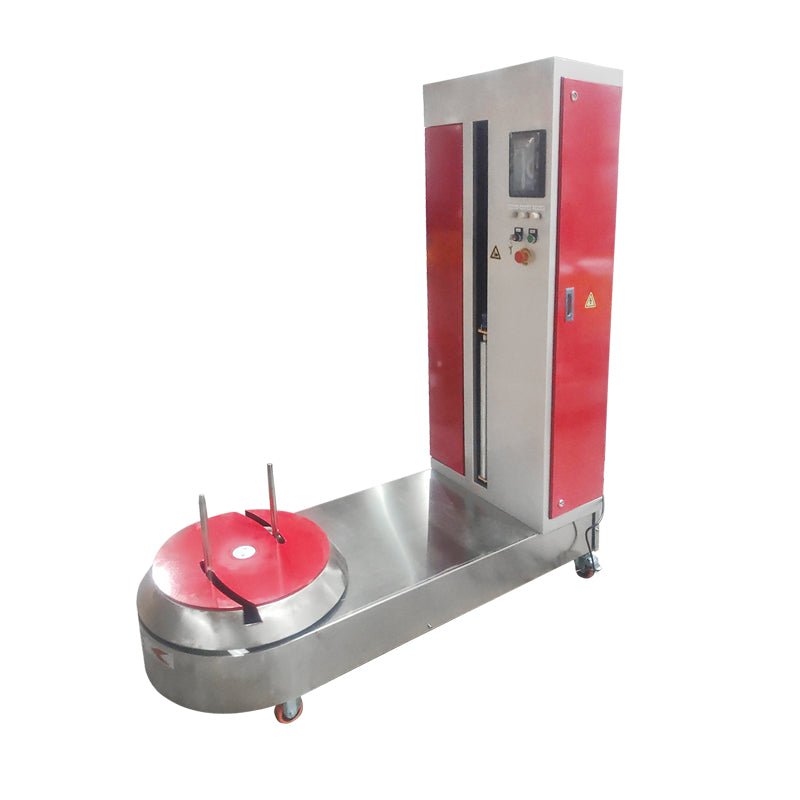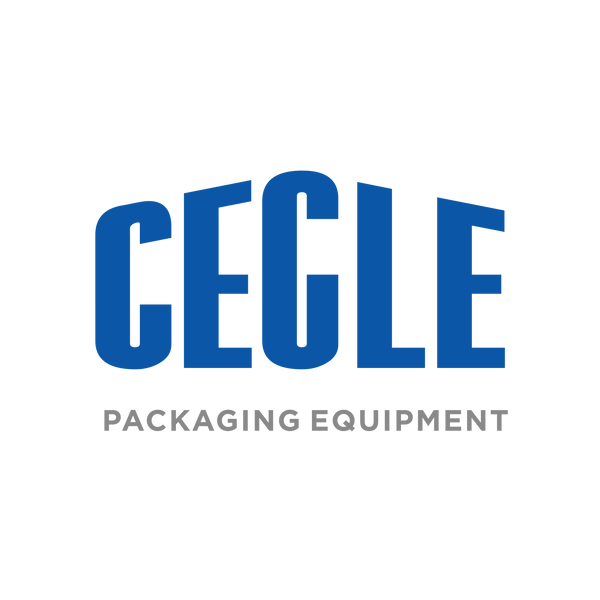
What is a Semi-Automatic Luggage Wrapping Machine?
Share
A semi-automatic luggage wrapping machine is one of the mainstream types of luggage wrapping equipment, falling between manual wrapping machines and fully automatic wrapping machines. Its core feature lies in "partial process automation and partial manual assistance," striking a balance between packaging efficiency, equipment cost, and operational flexibility. It is widely used in scenarios with a moderate volume of luggage and certain requirements for packaging standardization, such as airport terminals, railway station service points, and medium-sized logistics outlets.
I. Core Definition & Key Features
Semi-automatic luggage wrapping machines use mechanical structures to automate the "luggage rotation" process, reducing manual physical effort. However, manual intervention is still required for processes like "adjusting the height of the film roll, fixing the start and end of the film." Essentially, it “replaces repetitive labor with machines while relying on humans to control details.” Its specific features are as follows:
- Automated processes: The equipment is equipped with an electric rotating platform. When activated, it drives the luggage to rotate at a steady speed (with adjustable rotation speed), eliminating the need for manual pushing of the luggage or the film.
- Manual assistance processes: It is necessary to manually attach the starting end of the stretch film to the luggage, manually control the lifting direction of the film roll (or adjust the height via a simple handle), and assist in cutting the film after packaging (some models require manual tearing, while others support semi-automatic film cutting).
- Low operational threshold: No professional training is needed; ordinary people can operate it after simple guidance. Additionally, the equipment is smaller in size than fully automatic models, and its installation does not require complex infrastructure (it usually only needs to be connected to municipal power supply).
II. Working Process (Taking Common Airport Models as Examples)
The operation process of a semi-automatic luggage wrapping machine is clear and fixed, usually taking 40 seconds to 1.5 minutes (adjusted according to the size of the luggage). The specific steps are as follows:
- Place the luggage: Manually place the luggage to be wrapped (such as suitcases and backpacks) steadily on the rotating platform at the center of the equipment, ensuring the luggage’s center of gravity is centered (to prevent tilting during rotation).
- Fix the film start: Pull out a section of stretch film from the equipment’s film roll, and manually attach the starting end of the film to the surface of the luggage (usually choosing a flat side or top to avoid covering labels).
- Start automatic wrapping: Press the equipment’s start button; the rotating platform begins to drive the luggage to rotate at a steady speed. At the same time, manually hold the film roll and slowly move it up and down according to the height of the luggage, ensuring the film is evenly wrapped around the sides, top, and bottom of the luggage (some models have simple guide rails to assist in controlling the lifting direction).
- Set the number of wrapping layers: Depending on requirements (e.g., 1-2 layers for ordinary scratch protection, 3-4 layers for anti-theft), after wrapping to the specified number of layers, manually press the pause button, and the rotating platform stops.
- Cut the film and finish: Manually tear the film (or cut it using the equipment’s built-in simple film cutter), and attach the end of the film to the already wrapped film layer to ensure it does not loosen.
- Take out the luggage: Manually remove the wrapped luggage from the rotating platform, and the entire process is completed.
III. Core Advantages: Why It Is a "Cost-Effective Choice"
Compared with manual and fully automatic models, the advantages of semi-automatic luggage wrapping machines focus on "balancing efficiency, cost, and flexibility," making them particularly suitable for scenarios with a moderate volume of luggage:
- Higher efficiency than manual models: There is no need to manually push the luggage to rotate; only the lifting of the film needs to be controlled. A single person can wrap 20-30 pieces of luggage per hour (manual models can only wrap 10-15 pieces), significantly reducing manual physical consumption.
- Lower cost than fully automatic models: The purchase price of the equipment is usually 1/3 to 1/2 of that of fully automatic models (semi-automatic models cost approximately 5,000-20,000 yuan, while fully automatic models are mostly over 50,000 yuan). It also has low energy consumption and simple maintenance (without complex components such as automatic positioning and robotic arms).
- Strong flexibility: It can adapt to luggage of different sizes (from 20-inch carry-on suitcases to 32-inch large suitcases, and even irregular combinations of backpacks and cartons). Manual operation allows adjusting the wrapping angle according to the shape of the luggage (e.g., wrapping 2 more layers at the corners for reinforcement), avoiding the "packaging blind spots" of fully automatic models for irregular luggage.
- Convenient installation: No fixed foundation or complex circuits are required; it only needs a flat space of 1-2 square meters and can be used by connecting to a 220V municipal power supply. It is suitable for "flexible layout" scenarios such as airport service desks and temporary packaging points at railway stations.
IV. Applicable Scenarios: Where Is It Used?
The applicable scenarios for semi-automatic luggage wrapping machines are mainly those with "a moderate volume of luggage, the need to balance efficiency and cost, and diverse luggage sizes," including:
- Transportation hubs: "Luggage packaging service points" in airport terminals (where passengers pay for packaging on demand, and luggage sizes vary), and long-distance luggage packaging areas in railway stations/bus stations (with a daily luggage volume of 50-200 pieces, no need for the high speed of fully automatic models).
- Logistics and courier services: Medium-sized courier outlets (for luggage-like parcels sent by individuals, such as moving luggage and study-abroad luggage, which require reinforced packaging), and urban logistics transfer stations (for short-distance transferred luggage-like goods, no need for batch standardized packaging).
- Accommodation and services: High-end chain hotels (providing free/paid luggage packaging services for guests to enhance the customer experience, with a daily demand of 10-30 pieces), and scenic spot visitor centers (providing anti-damage packaging for tourists’ large luggage to facilitate storage during sightseeing).

